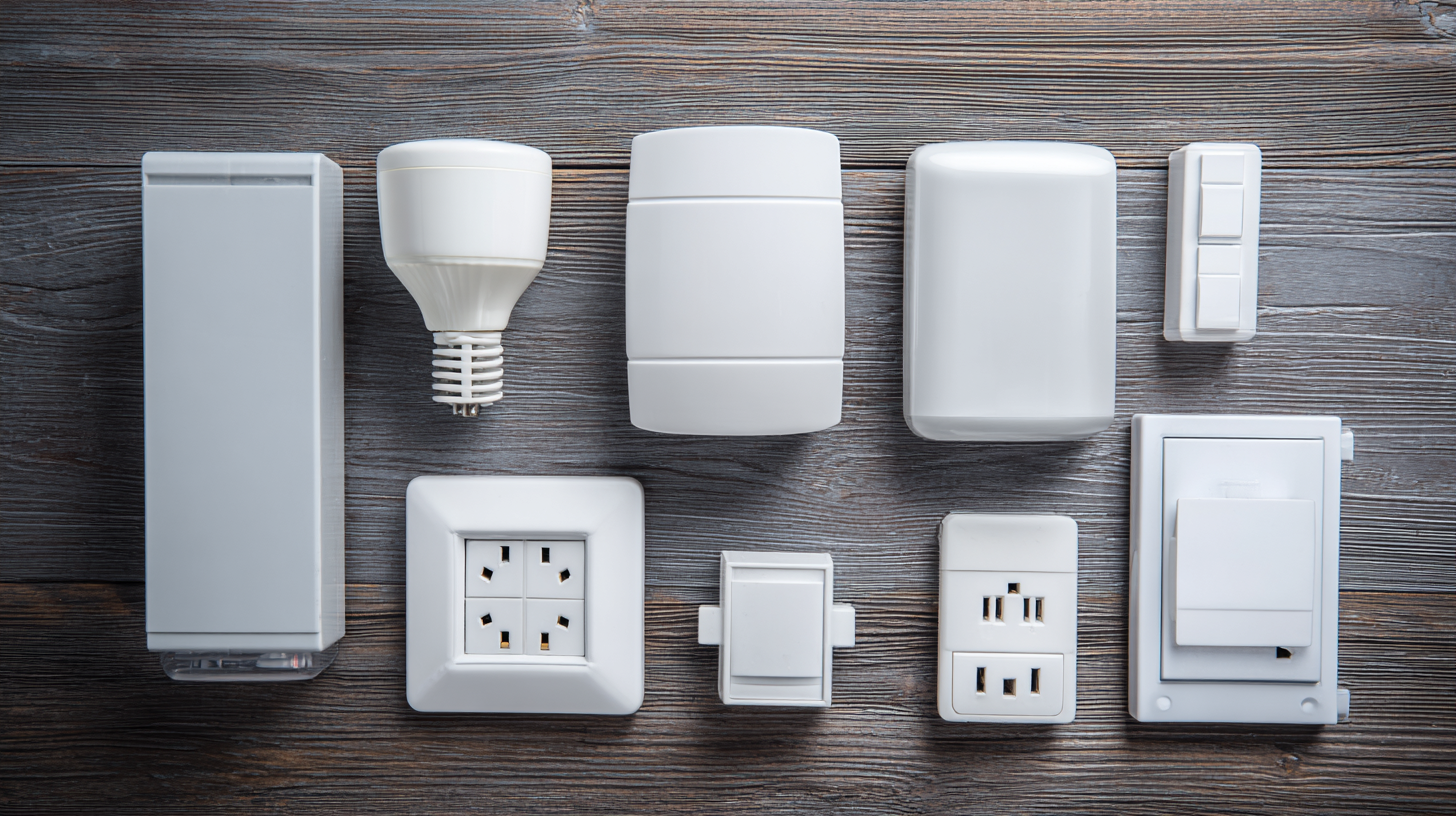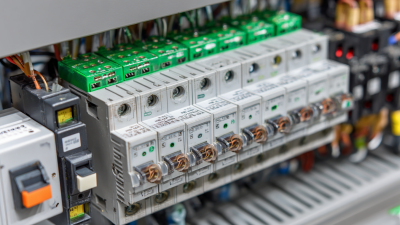Top 10 Surge Protective Devices for Home and Office Use to Ensure Your Electronics Safety
In an increasingly technology-driven world, safeguarding our electronic devices has never been more critical. Data from the Consumer Electronics Association reveals that more than 60% of American households own at least five electronic devices that require protection. A surge protective device (SPD) serves as a crucial line of defense against unexpected voltage spikes that can damage sensitive equipment, costing homeowners and businesses billions in repairs and replacements annually. According to a report from the National Fire Protection Association, electrical surges account for roughly 30% of all residential electrical fires, highlighting the urgent need for effective surge protection.

In 2025, selecting the right surge protective device remains paramount not just for residential use but also for office environments where the stakes are even higher due to the reliance on expensive and essential technology. The rise of smart devices and home automation systems further emphasizes the need for robust surge protection. A survey by the Institute of Electrical and Electronics Engineers indicates that the demand for reliable SPDs is projected to grow by 15% annually as consumers become more aware of the risks associated with electrical surges. This article outlines the top 10 surge protective devices available in 2025, providing insights into their features, efficiency ratings, and suitability for both home and office applications to ensure optimal protection for your valuable electronics.
Understanding Surge Protective Devices: Importance and Functionality
Surge protective devices (SPDs) play a crucial role in safeguarding electronic equipment from voltage spikes that can occur due to lightning strikes, power outages, or equipment malfunctions. These spikes, often fleeting but powerful, can lead to significant damage, potentially short-circuiting devices or degrading their performance over time.
Understanding the functionality of SPDs is essential for both households and offices that rely on a variety of electronics, from computers and televisions to critical appliances.
 SPDs work by diverting excess voltage away from sensitive devices, effectively shunting harmful surges to the ground. This process ensures that the electrical current remains stable, protecting the internal circuitry of devices from damage.
It is important not only to choose an SPD with appropriate voltage ratings but also to consider features such as response time and energy absorption capability. By integrating quality surge protectors into their electrical systems, users can prolong the lifespan of their devices and prevent costly repairs or replacements, making surge protection an indispensable component of smart electronic management.
SPDs work by diverting excess voltage away from sensitive devices, effectively shunting harmful surges to the ground. This process ensures that the electrical current remains stable, protecting the internal circuitry of devices from damage.
It is important not only to choose an SPD with appropriate voltage ratings but also to consider features such as response time and energy absorption capability. By integrating quality surge protectors into their electrical systems, users can prolong the lifespan of their devices and prevent costly repairs or replacements, making surge protection an indispensable component of smart electronic management.
Key Features to Look for in Surge Protective Devices for Home and Office
When selecting a surge protective device (SPD) for home or office use, it's essential to consider several key features that ensure your electronic equipment remains safe from voltage spikes. According to the National Fire Protection Association (NFPA), electrical surges account for over 25% of all electrical fires in residential settings. Therefore, investing in a quality SPD is not just a precaution, but a necessity for safeguarding your devices.
One critical feature to look for in SPDs is their voltage protection rating (VPR). This rating indicates the maximum voltage a device can endure before it fails to provide adequate protection. A lower VPR is preferable, as it means the device will trigger before electrical surges can damage connected equipment. Additionally, the response time of the SPD is crucial; a device that reacts in less than one nanosecond can effectively protect sensitive electronics like computers and televisions. The International Electrotechnical Commission (IEC) recommends devices with a response time of 5 nanoseconds or less.
Moreover, consider the energy absorption capacity, measured in joules; devices with higher joule ratings can withstand more significant surges. For instance, a surge protector with a joule rating of at least 1000 is recommended for comprehensive protection of home and office electronics. By prioritizing these features—VPR, response time, and joule rating—you can ensure your investment is well protected against unpredictable electrical surges.
Top 10 Surge Protective Devices for Home and Office Use
| Device Name | Voltage Rating | Maximum Surge Current | Number of Outlets | Response Time | Additional Features |
|---|---|---|---|---|---|
| Model A | 120V | 15,000A | 6 | 1 ns | USB Ports, Indicator Lights |
| Model B | 120V | 10,000A | 8 | 0.5 ns | Surge Countdown Timer |
| Model C | 240V | 20,000A | 4 | 1 ns | Ethernet Protection |
| Model D | 120V | 12,000A | 10 | 0.5 ns | Smart Technology |
| Model E | 120V | 25,000A | 6 | 1 ns | Noise Filtering |
| Model F | 120V | 8,000A | 5 | 0.3 ns | Integrated Circuit Protection |
| Model G | 120V | 30,000A | 12 | 1 ns | Overload Protection |
| Model H | 240V | 10,000A | 4 | 0.7 ns | Voltage Regulation |
| Model I | 120V | 15,000A | 8 | 0.4 ns | Wi-Fi Connectivity |
| Model J | 120V | 5,000A | 6 | 0.2 ns | Compact Design |
Top 10 Rated Surge Protectors: A Comprehensive Review
When it comes to safeguarding your electronics at home or in the office, investing in a high-quality surge protector is essential. According to a report from the National Fire Protection Association (NFPA), surge events account for significant electrical damage, leading to thousands of fires annually and costing consumers billions in damage repairs and equipment replacements. This underscores the importance of selecting the right surge protective devices (SPDs) for protecting your valuable devices.
Our comprehensive review of the top-rated surge protectors highlights key features such as energy absorption capacity, response time, and the number of outlets available. For example, the best surge protectors typically feature energy ratings of 400 joules or higher, providing a robust line of defense against power spikes. Additionally, devices with low response times, preferably under one nanosecond, are crucial to ensure fast reactions to voltage surges, thus protecting sensitive electronics like computers and home theater systems from potential damage. By choosing a well-rated surge protector, you can significantly reduce the risk of data loss and hardware failure, securing your investments in a tech-driven world.
Installation Tips for Optimal Performance of Surge Protective Devices
When it comes to protecting your electronics from surges, proper installation of surge protective devices (SPDs) is crucial for optimal performance. Start by placing your SPDs at the main service panel; this is where the majority of surges will enter your home. Ensure that the device is connected using short and secure wires to minimize resistance, which can impact its effectiveness. For additional protection, consider installing point-of-use SPDs at critical electronic locations to safeguard individual devices.
Another important tip is to assess the location of your SPDs in relation to potential surge sources, such as large appliances and outdoor equipment. Keep devices away from these sources to reduce the risk of interference. Regularly check your SPDs for operational status lights, and remember to replace them as needed, especially after a significant power surge or storm. By following these installation tips, you can enhance the longevity and efficiency of your surge protective devices, ultimately ensuring your electronics remain safe from unforeseen power spikes.

Maintenance and Troubleshooting: Ensuring Longevity of Your Surge Protectors
Maintaining your surge protective devices (SPDs) is essential for protecting your electronics over the long term. Regularly check for any signs of wear or damage, including discoloration or cracks in the casing. If you notice that the device is warm to the touch or emits a burning smell, it is crucial to replace it immediately. Remember, SPDs have a limited lifespan, typically ranging from three to five years, depending on usage and the severity of power surges.
Tips: To extend the life of your surge protectors, consider connecting them to a smart power strip that can provide additional features like power saving modes. Furthermore, avoid daisy-chaining multiple surge protectors together, as this can create potential overloads and lead to device failure.
Testing your surge protectors every few months can also help ensure they are functioning as intended. Many models come with a diagnostic LED indicator that signals their operational status. If the light is not lit, it may be time to replace the device. By staying vigilant and proactive about maintenance, you can safeguard your electronics and keep them operational for many years.
Related Posts
-

Ultimate Guide to Choosing the Right Surge Protection Circuit Breaker for Your Needs
-

Why Surge Protection is Essential for Your Home and Business Safety
-

7 Essential Tips for Choosing the Right Electric Breaker for Your Needs
-

7 Essential Tips for Choosing the Right Air Circuit Breaker for Your Electrical Systems
-

Innovative Usage Scenarios of DC Molded Case Circuit Breakers in Modern Electrical Systems
-

Common Issues with Electric Breakers: A Global Purchasing Insight








